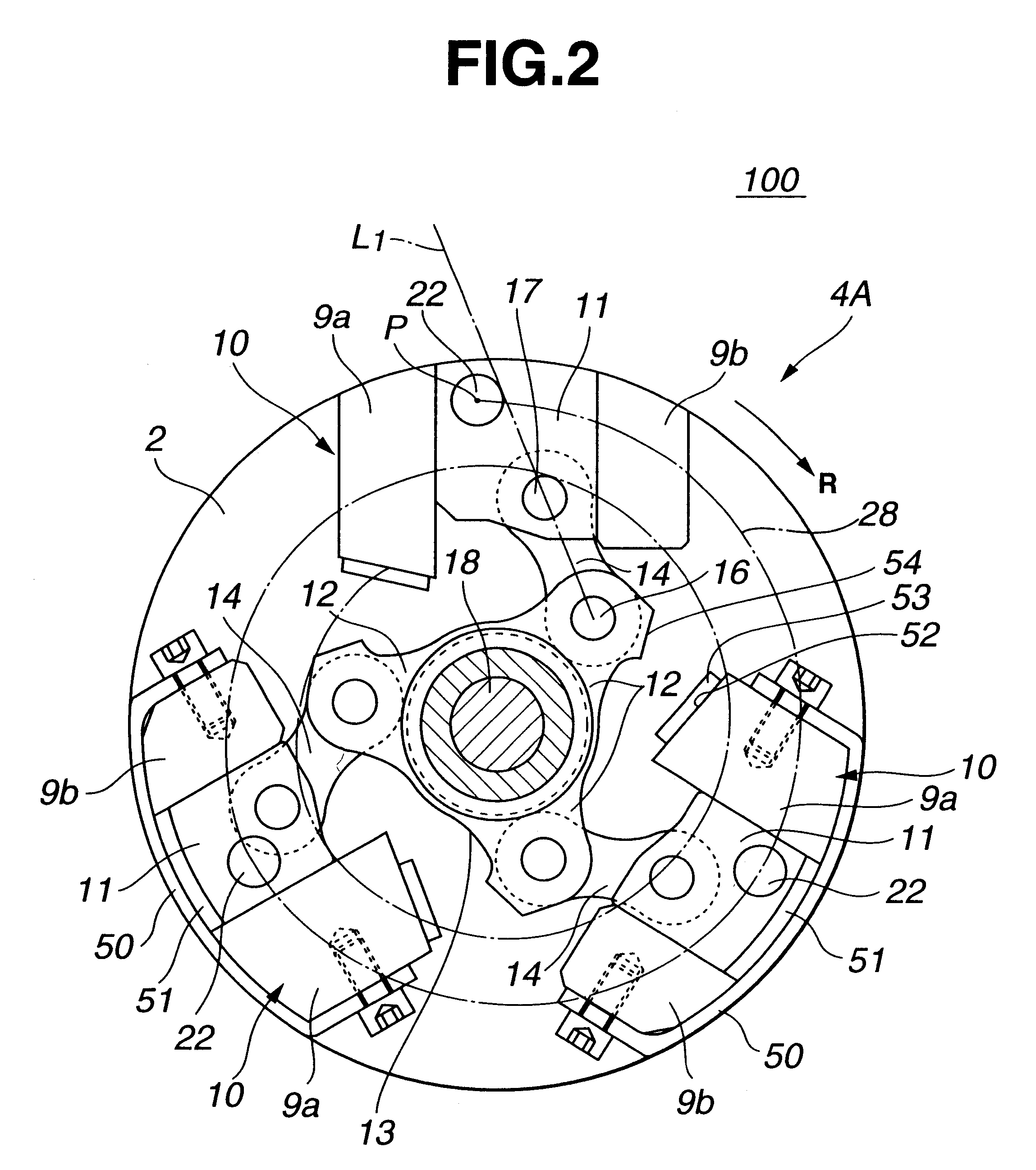Valve timing control device of internal combustion engine
a timing control and internal combustion engine technology, applied in valve arrangements, machines/engines, mechanical equipment, etc., can solve the problems of bulky construction of the relative rotation angle control mechanism and the increase in the size of the helical gears
- Summary
- Abstract
- Description
- Claims
- Application Information
AI Technical Summary
Benefits of technology
Problems solved by technology
Method used
Image
Examples
first embodiment
Referring to FIGS. 1 to 6 of the drawings, there is shown a valve timing control device 100 which is the present invention.
Although the valve timing control device 100 is described as being applied to intake valves of an internal combustion engine, the device 100 can be also applied to exhaust valves of the engine.
As is understood from FIG. 1, the valve timing control device 100 is arranged on a cylinder head which has a plurality of intake ports 72 (only one is shown) and a plurality of exhaust ports (not shown) which extend from combustion chambers "CC" in a known manner. Each intake port 72 has an intake valve 71 which functions to open and close the intake port 72. Due to function of a valve spring 73, each intake valve 71 is biased in a direction to close the intake port 72. The intake valves 71 are driven by respective cams 70 provided on a camshaft 1 which is supported on the cylinder head in a manner to rotate about its axis.
Rotatably disposed around a front (viz., left) end...
second embodiment
Referring to FIG. 7, there is shown but partially a relative rotation angle control mechanism 4B employed in a valve timing control device 200 of the present invention.
In this second embodiment 200, each sliding member 11 is formed on the front surface thereof with two semi-spherical recesses 21-1 and 21-2 into which two rolling balls 22 are respectively received, and these two recesses 21-1 and 21-2 are spaced in a radial direction with respect to the spiral guide groove 28 of the guide plate 24. Thus, the two rolling balls 22 are received in radially spaced portions of the spiral guide groove 28, as shown. Due to usage of the two rolling balls 22 for each sliding member 11, much smoother radial movement of the sliding member 11 is obtained. That is, due to usage of the two rolling balls 22, undesired inclination of the sliding member 11 is suppressed or at least minimized even when the line of action of the link arm 14 varies its inclination angle.
Referring to FIG. 8, there is sho...
third embodiment
Referring to FIG. 9, there is shown a partial sectional view of a relative rotation angle control mechanism 4C employed in a valve timing control device 300 of the present invention.
In this embodiment 300, each sliding member 11 is equipped with a biasing means for biasing the rolling ball 22 toward the guide plate 24. That is, the biasing means comprises a cylindrical bore 47 which is formed in the front part of the sliding member 11, a circular ball holder 46 which is slidably received in the cylindrical bore 47 and formed with a semi-spherical recess 21 for rotatably receiving the rolling ball 22, and a coil spring 48 which is received in the cylindrical bore 47 to bias the circular ball holder 46 toward the guide plate 24. Due to function of the biasing means having the above-mentioned construction, the rolling ball 22 is held much softly by the sliding member 11 as compared with the first and second embodiments 100 and 200, which promotes the smoothed traveling of the rolling b...
PUM
 Login to View More
Login to View More Abstract
Description
Claims
Application Information
 Login to View More
Login to View More - R&D
- Intellectual Property
- Life Sciences
- Materials
- Tech Scout
- Unparalleled Data Quality
- Higher Quality Content
- 60% Fewer Hallucinations
Browse by: Latest US Patents, China's latest patents, Technical Efficacy Thesaurus, Application Domain, Technology Topic, Popular Technical Reports.
© 2025 PatSnap. All rights reserved.Legal|Privacy policy|Modern Slavery Act Transparency Statement|Sitemap|About US| Contact US: help@patsnap.com



